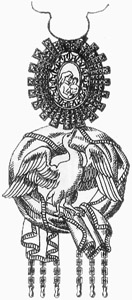
Albert of Prussia was a German prince who was the 37th grand master of the Teutonic Knights and, after converting to Lutheranism, became the first ruler of the Duchy of Prussia, the secularized state that emerged from the former Monastic State of the Teutonic Knights. Albert was the first European ruler to establish Lutheranism, and thus Protestantism, as the official state religion of his lands. He proved instrumental in the political spread of Protestantism in its early stage, ruling the Prussian lands for nearly six decades (1510–1568).
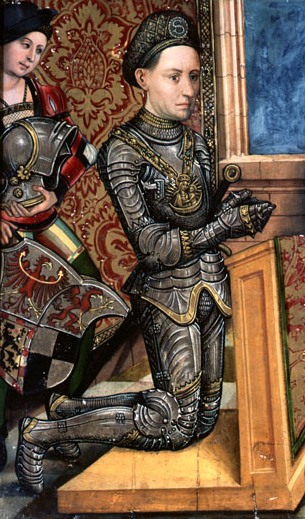
Frederick I of Ansbach and Bayreuth was born at Ansbach as the eldest son of Albert III, Margrave of Brandenburg by his second wife Anna, daughter of Frederick II, Elector of Saxony. His elder half-brother was the Elector John Cicero of Brandenburg. Friedrich succeeded his father as Margrave of Ansbach in 1486 and his younger brother Siegmund as Margrave of Bayreuth in 1495.

George Frederick of Brandenburg-Ansbach was Margrave of Ansbach and Bayreuth, as well as Regent of Prussia. He was the son of George, Margrave of Brandenburg-Ansbach and a member of the House of Hohenzollern. He married firstly, in 1559, Elisabeth of Brandenburg-Küstrin. He married secondly, in 1579, Sophie of Brunswick-Lüneburg, daughter of William of Brunswick-Lüneburg and Dorothea of Denmark.

George of Brandenburg-Ansbach, known as George the Pious, was a Margrave of Brandenburg-Ansbach from the House of Hohenzollern.

The House of Hohenzollern is a formerly royal German dynasty whose members were variously princes, electors, kings and emperors of Hohenzollern, Brandenburg, Prussia, the German Empire, and Romania. The family came from the area around the town of Hechingen in Swabia during the late 11th century and took their name from Hohenzollern Castle. The first ancestors of the Hohenzollerns were mentioned in 1061.

Albrecht III was Elector of Brandenburg from 1471 until his death, the third from the House of Hohenzollern. A member of the Order of the Swan, he received the cognomen Achilles because of his knightly qualities and virtues. He also ruled in the Franconian principalities of Ansbach from 1440 and Kulmbach from 1464.
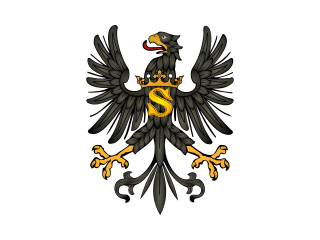
The Duchy of Prussia or Ducal Prussia was a duchy in the region of Prussia established as a result of secularization of the Monastic Prussia, the territory that remained under the control of the State of the Teutonic Order until the Protestant Reformation in 1525.

Brandenburg-Prussia is the historiographic denomination for the early modern realm of the Brandenburgian Royal dynasty of the House of Hohenzollern between 1618 and 1701. Based in the Electorate of Brandenburg, the main branch of the Hohenzollern intermarried with the branch ruling the Duchy of Prussia, and secured succession upon the latter's extinction in the male line in 1618.

The Archbishopric of Magdeburg was a Latin Catholic archdiocese (969–1552) and Prince-Archbishopric (1180–1680) of the Holy Roman Empire centered on the city of Magdeburg on the Elbe River.
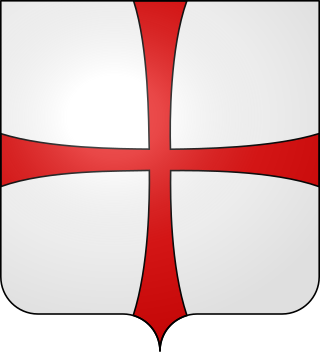
The Swabian League was a military alliance of imperial estates – imperial cities, prelates, principalities and knights – principally in the territory of the early medieval stem duchy of Swabia established in 1488. New institutions created through imperial reform removed the need for the league, whilst the religious revolution of the Protestant Reformation divided its members, leading to the Swabian League being disbanded in 1534.

The Principality or Margraviate of (Brandenburg) Ansbach was a free imperial principality in the Holy Roman Empire centered on the Franconian city of Ansbach. The ruling Hohenzollern princes of the land were known as margraves, as their ancestors were margraves.

The Principality of Bayreuth or Margraviate of Brandenburg-Bayreuth was an immediate territory of the Holy Roman Empire, ruled by a Franconian branch of the Hohenzollern dynasty. Since Burgrave Frederick VI of Nuremberg was enfeoffed with the Margraviate of Brandenburg in 1415/17, the Hohenzollern princes transferred the margravial title to their Franconian possessions, though the principality never had been a march. Until 1604 they used Plassenburg Castle in Kulmbach as their residence, hence their territory was officially called the Principality of Kulmbach or Margraviate of Brandenburg-Kulmbach until the Empire's dissolution in 1806.

Lehnin Abbey is a former Cistercian monastery in Lehnin in Brandenburg, Germany. Founded in 1180 and secularized during the Protestant Reformation in 1542, it has accommodated the Luise-Henrietten-Stift, a Protestant deaconesses' house since 1911. The foundation of the monastery in the newly established Margraviate of Brandenburg was an important step in the high medieval German Ostsiedlung; today the extended Romanesque and Gothic brickstone buildings, largely restored in the 1870s, are a significant part of Brandenburg's cultural heritage.

The Margraviate of Brandenburg was a major principality of the Holy Roman Empire from 1157 to 1815 that, having electoral status although being quite poor, grew rapidly in importance after inheriting the Duchy of Prussia in 1618 and then came to play a pivotal role in the history of Germany and that of Central Europe as core of the Prussian kingdom.

Christian Friedrich Carl Alexander was the last margrave of the two Franconian principalities, Bayreuth and Ansbach, which he sold to the King of Prussia, a fellow member of the House of Hohenzollern.

Frederick William of Brandenburg-Schwedt was a German nobleman. In his lifetime, from 1711 to 1771, he held the titles Prince in Prussia and Margrave of Brandenburg, with the style Royal Highness. He was made a knight of the Order of the Black Eagle.
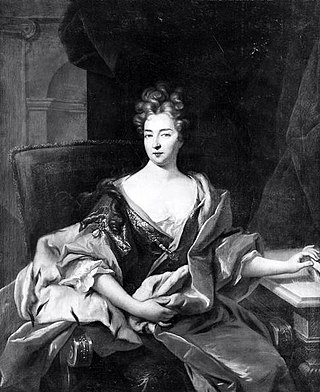
Princess Eleonore Erdmuthe Louise of Saxe-Eisenach was a member of the House of Wettin and through her two marriages became Margravine of Brandenburg-Ansbach and Electress of Saxony.
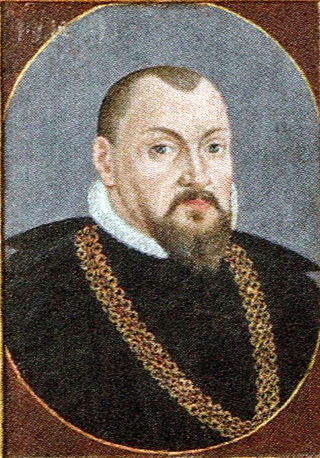
John of Brandenburg-Küstrin, was a member of the House of Hohenzollern and a Margrave of Brandenburg-Küstrin.
The Ordre de la Sincérité, was an order of knighthood of the German Margrave of Bayreuth. The order's name came from 18th-century courtiers who spoke French. The order had fifty knights. It was later renamed the Order of the Brandenburg Red Eagle and later as the Order of the Red Eagle.

The church of St. Gumbertus, named for Saint Gondelbert, is one of the central city churches of Ansbach, Bavaria, together with the neighboring St. Johannis. Located in the Altstadt of Ansbach, St. Gumbertus, now a Lutheran church, was originally the church of a monastery that was founded by St. Gumbert around 750. Today it serves as a venue for concerts of the music festival Bachwoche Ansbach. The church contains the oldest structures in Ansbach and is considered Ansbach's city symbol.



